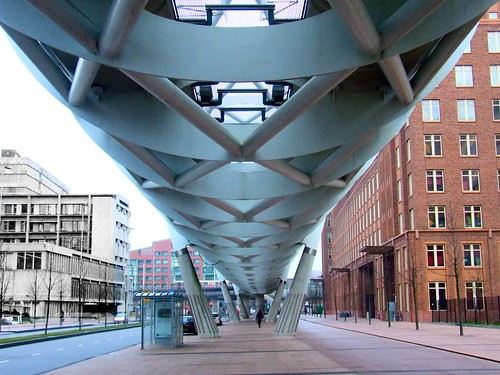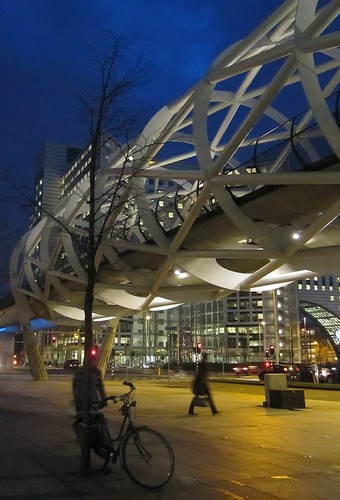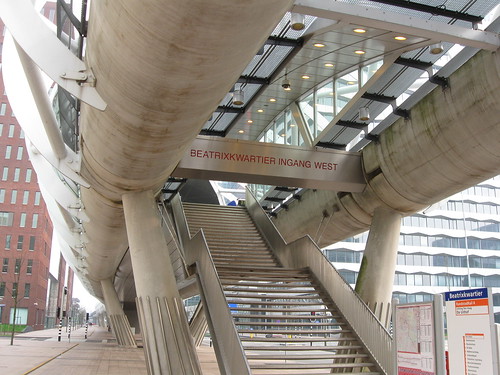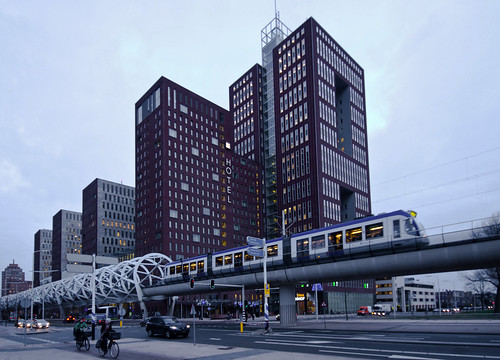Architects and urban designers may be no fans of elevated transport infrastructure and fair enough. Rarely is the overhead viaduct, rail bridge or elevated freeway a contributor to the urban form.
Typically, they sap the very life out of the surrounding area.
Notwithstanding that argument, however, is the fact that tunnelling is remarkably more expensive than building overhead transport infrastructure while providing the exact same quality and level of service.
Plus there’s the question of the view – but that’s something for a whole other post.
Now if the architects and urban designers of the world were willing to open their own wallets to make up for the difference in price between elevated and tunnelled transport infrastructure, then tunnels it is. But until that unlikely day ever arrives, elevated transport infrastructure is likely to be the preferred means of providing fully-dedicated rights-of-way for public transit in the near future . . . at least in places where virtual slave labour can’t be used to build said tunnels.
The entire problem with the elevated versus buried argument is the logical fallacy both sides present. The buried proponents argue that elevated infrastructure is inherently ugly and detrimental to the urban form and it’s a hard argument to refute when you see things like Toronto’s Gardiner Expressway or the Chicago El. But the argument breaks down because the fact that most elevated infrastructure is ugly doesn’t mean all elevated infrastructure must be ugly.
As I’ve argued before, ugly is an opportunity to be beautiful and elevated can be beautiful.
The elevated proponents, meanwhile, don’t do themselves any favours by consistently producing and constructing some of the most ugly and intrusive infrastructure ever unleashed on the urban form. You can’t claim that a piece of infrastructure will help a community when a great many historical examples have destroyed, decimated and cut-up pre-existing communities.
Let’s be frank here: Most elevated transport infrastructure is ugly and it’s therefore no surprise that architects and urban designers get all up in arms whenever a new one is proposed for any city. Just look at the debate over Honolulu’s new LRT line over at The Transport Politic here and here.
Which brings me to the Netherlands new light rail systems the Randstadrail. Opened in phases over the second half of the last decade, it connects The Hague with Rotterdam. While most of the Rotterdam system is underground, much of the track infrastructure in the Hague is elevated. And unlike most standard elevated tracks, these are elevated not just physically, but aesthetically as well. Take a look:

Note how the overhead rails don’t overwhelm the sidewalk below. There’s an elegant, almost beautiful interplay between street, rail and service. Image by flickr user Daniel Sparing.

From underneath the Randstadrail. The lattice work creates a sculptural effect that is almost organic. Notice too the space for pedestrians and the lack of support columns. Image by flickr user Gerard Stolk.
It’s an interesting example of using the elevated track as a visual cue, guide and corridor. It seems designed to play with the pedestrian at street level as much as it is designed to move people above street level.
Will elevated infrastructure work everywhere? Of course not. Some urban form dictates that elevated infrastructure is completely inappropriate and impossible. But at the same time, if one considers geologic and economic factors, some environments are completely inappropriate for tunneled infrastructure too.
At the end of the day architects and urban designers have a responsibility to understand the financial constraints cities face and cannot disregard all elevated structures simply because they’re “ugly.” After all, an architect’s or an urban designer’s job is to make the urban form beautiful within the structural, political, environmental and economic factors of the day. For an architect or urban designer to willfully ignore something as viable as elevated transport infrastructure simply on the grounds of aesthetics is to admit that they possess a severe lack of creativity and are quite likely just not very good at their jobs.
To draw an analogy: If you were bad at chemistry, would you run around claiming chemistry to be stupid, useless, harmful or ugly? Or would you instead rely upon people who actually did understand chemistry and knew how to use it responsibly?
Hopefully this current debate subsides in the near future. It’s harmful and it’s wasteful. Hopefully as the internet allows us to easily peer into the backyards and intersections of the world, systems like the Randstadrail in The Hague and projects like Zürich’s Im Viadukt will gain notice and can go a long way to showing the world that elevated infrastructure can be more, shall we say, elevated.





7 Comments
I also like the way the S-Bahn was handled in the Hackescher Markt area of Berlin. They ran the S-Bahn tracks on top of the right of way left by an Old Roman era viaduct that originally was used to bring water into the city. If you notice in the attached pictures the viaduct is surrounded by sidewalks on both sides that create a pedestrian friendly area surrounding the tracks. I think the secret to why both the S Bahn in Berlin and the Randstadrail in the Netherlands work is that they don’t block off light to either the street or the sidewalks below.
http://www.stadtbewohner.de/hackescher_markt/index.html
@ Ed,
Thanks for these! I’ve never actually heard of this line before, so very informative. On this site I often talk about how gondola infrastructure has to be thought of as separate from the architecture. The more I look at things like this, however, I realize we need to consider the two things together.
I wonder how possible it would be to pay for the cost of an LRT system by renting out the retail space below it? Hmm.
Hmmm, basically:
It’s streetlevel vs. on roofs vs. elevated vs. highly elevated (vs. underground)
streetlevel – you will need space for it, accidents happen easily, easy access, very common
on roofs – a special infrastructure is needed for it, it’s noisy underneath, though it is elevated it is good accessible.
elevated – most elevated systems look unlovely, accident free, able to use given infrastructure (space), more difficult to access
highly elevated – free from infrastructure, accident free, worst access?!, will look futuristic?!
Steven-
In Queens the Long Island Rail Road is elevated. You might be interested in the Forest Hills Garden Station and the accompanying Forest Hills Garden Square.
Here is the view from above.
http://airspacenewyorkcity.blogspot.com/2008/07/queens-forest-hills-station-square.html
Here is the view from the railroad station into the square during winter time.
http://www.ronsaari.com/stockImages/nyc/StationSqureForestHillsQueensWinter2.php
Here are also some more photos of the Forest Hills Garden Railroad Station, Forest Hills Garden Square and just more photos of the community of Forest Hills Garden
http://www.bridgeandtunnelclub.com/bigmap/queens/foresthills/foresthillsgardens/index.htm
http://www.flickr.com/groups/fhg/
If you spend some time in the area or just playing around with the google maps for the area, you will notice that the elevated train station stop actually helps to activate the neighborhood, especially the area just to the north of the railroad station. Again the reason I think the place works so well is that the elevated railroad is built adjacent not on top of the streets and sidewalks. This allows light and trees to grow in the public spaces making them inviting, unlike say how the elevated train stations tend to work along the loop in Chicago.
People assume the elevated transit platforms need to be ugly. But that is just that so many elevated train platforms were poorly laid out and not enough thought was given to how to design attractive stations. But if all elevated train stops looked like Forest Hills Garden, I suspect most people would prefer them to subways.
I would add another elevated site in Queens NY that does not distract the surrounding area. The viaduct from 31st Street to 48th Street for the 7 line actually adds to the neighborhood. The arches and the tile work along with the Arts and Crafts styling adds beauty to the surrounding area. And the parking under the El adds an amenity for shoppers.